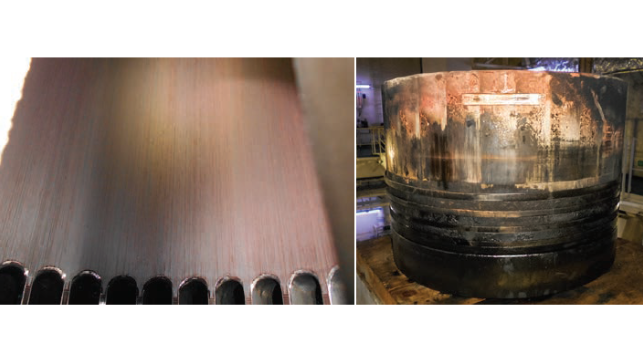Chevron: VLSFO Can Accelerate Liner Wear for Older Engines

Chevron Marine Lubricants has reported a pattern of unusual liner wear in some older engines that have recently switched to VLSFO. At teardown, pistons showed signs of scuffing and strange red deposits on the crown, and liners showed heavy scoring marks with a deep red layer of deposit, along with iron burrs in the scavenge ports.
The seventeen vessels identified with these issues represented a broad cross-section of the fleet - bulkers, tankers, boxships, ranging in age from four years to 20. All had two-stroke marine diesel engines made by the major OEMs, and they used a wide variety of lubricants from a variety of suppliers. Most of the engines affected were not fitted with the latest generation of piston rings.
In general, the liner degradation problem did not impact all cylinders in the engine, but rather some cylinders with pre-existing liner condition issues or poor piston ring pack condition. Since the vessels in question used a wide range of engine models and lubricating oils, Chevron ruled out oil performance and engine design issues.
With lab testing, Chevron's technicians determined that the red deposits were a mixture of calcium sulfate (from harmless detergent additives in the fuel) and iron oxide (from the liner wear). The one unifying factor in all cases was the switch to VLSFO, and the engines that sustained damage were using fuels that burned very well - fuels with high energy density, low CCAI and high estimated cetane number, meaning higher peak combustion pressures. This means more energy per tonne and a fuel cost savings, but it also results in more harsh operating conditions and more stress on the engine components. This had an impact on cylinders that were already coming due for an overhaul.
“While newer ships do not have a problem using these fuels, engines already closer to an overhaul did struggle sometimes,” said Luc Verbeeke. “Cylinder units that could have run for another six months or a year on HSFO did not survive the tougher conditions with the new fuels.”
